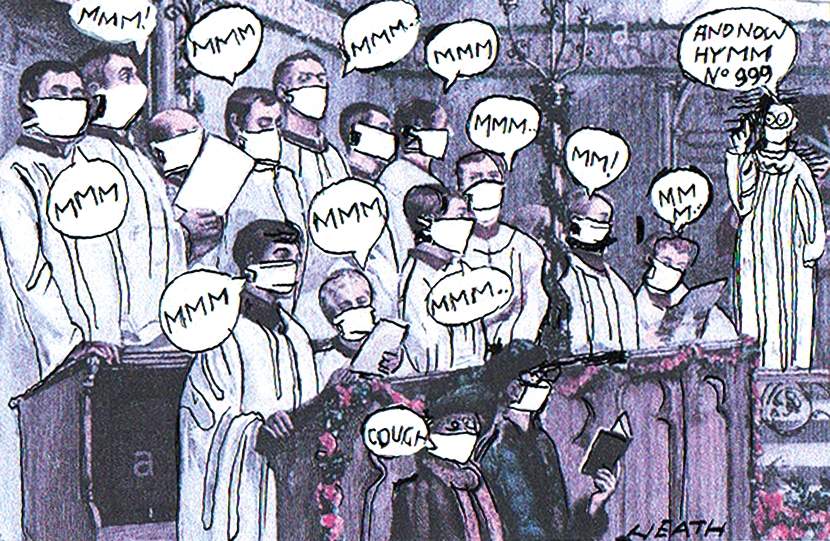‘And now we sing our final hymn, number 466.’ Remember that? The euphoria of congregational hymn-singing? The well-organised types always had the book open at the correct page, balanced precariously on the pew. The rest of us hurriedly flicked to 466 while singing the first verse, knowing it by heart from a thousand school assemblies. ‘Our shield and defender, the ancient of days…’
I can’t believe I’m writing this in the past tense, but it has been so long — almost 15 months — since anyone not in a choir sang a congregational hymn. How I miss that light-headedness, almost faintness, of standing up after a long service and singing your heart out, filling and emptying your lungs, fortified by the tiny wafer and sip of sweet wine. The experience was always tinged with relief — ‘Phew, we did it, survived the sermon, wasn’t too bad, gosh, still managed to be an hour and a half long…’ But mainly it brought us all together into a heightened state at that final moment before the doors were flung open and we were released back into the cow-parsley churchyard.
Much has been written about the Department for Culture, Media and Sport’s absurd edict, announced last month, that only up to six amateur singers are allowed to sing indoors in England, even in a large ventilated hall, church or cathedral, while everyone is allowed to shout in pubs, sing in football stadiums and huff and puff in gyms. Not only is it scientifically dubious — the doctor and voice expert Declan Costello’s experiments last year proved that singing produced no more aerosols than speaking — it’s a rule clearly dreamed up by philistines, because the number six makes no sense in musical terms, most choral music being in four parts or eight parts but rarely in six.







Comments
Join the debate for just £1 a month
Be part of the conversation with other Spectator readers by getting your first three months for £3.
UNLOCK ACCESS Just £1 a monthAlready a subscriber? Log in